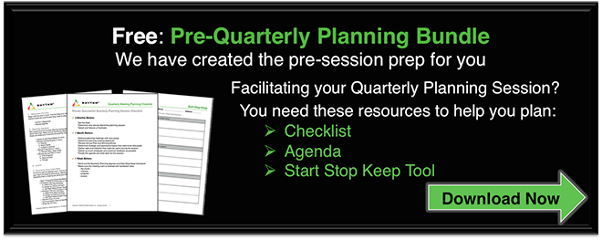Every quarter we see thousands of Priorities recorded in Rhythm. Some priorities will be execution-ready and finish SuperGreen. Others will be completely forgotten by Week 3.
and finish SuperGreen. Others will be completely forgotten by Week 3.
Unfortunately, it's a common pattern we see as Rhythm Consultants. A team invests two days of dedicated brainpower into a quarterly planning session. They've discussed, debated and finally agreed on their priorities. All that's left is recording their priorities on the dashboard, for all to see, so they can status them for the next 13 weeks.
And here's where the pitfall comes into play... priorities aren't written effectively, statusing becomes difficult, and sometimes, people even forget what the intent of a priority was in the beginning. Execution can come to a grinding halt without well-written priorities.
Below are some characteristics of well-written priorities:
1. They start with a verb. Increase, document, hire, train, launch, establish, close. These are all verbs, and all great choices for the first word of a Priority!
2. They are specific. A solid priority leaves nothing up to interpretation. If your Priority is only one or two words, you can bet on misalignment.
3. They have a due date. Be purposeful about the end date. If it needs to be done before the end of the quarter, spell it out.
4. They have Red-Yellow-Green criteria. Set clear goals and expectations around what is success and failure. See #2.
5. They have one owner. Even if there are several people supporting a priority, it should still have one quarterback.
6. They have 2-3 Milestone Actions. If a priority is truly actionable, there should be 2-3 milestones to hit along the way to achieving Green. Document a few Who, What, Whens for each priority.
7. They are aligned to the Team Plan. Not all Individual Priorities will line up directly to a Team Priority, but nothing should be out in left field. If you have a Priority that doesn't support the Team Plan, question if it is truly something you should be doing.
Here are a few Bold Comparisons to consider:
Good Priority: Increase Sales by 10%
Bad Priority: Sales
Good: Hire and Train 3 new Outbound Sales Reps
Bad: Hire to plan
So, how do your priorities stack up? If you have some that need work, discuss at your next Weekly Adjustment Meeting. It's never too late in the quarter to get execution back on track!
Editor's note: This blog was originally posted on May 31, 2015, and has been updated.
Photo Credit: iStock by Getty Images



 LinkedIn
LinkedIn
 Facebook
Facebook
